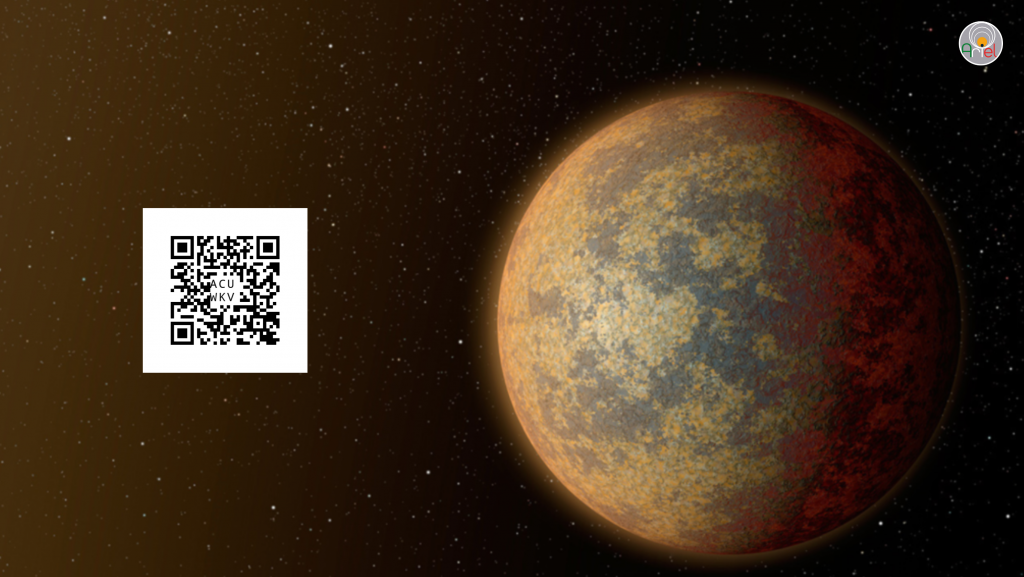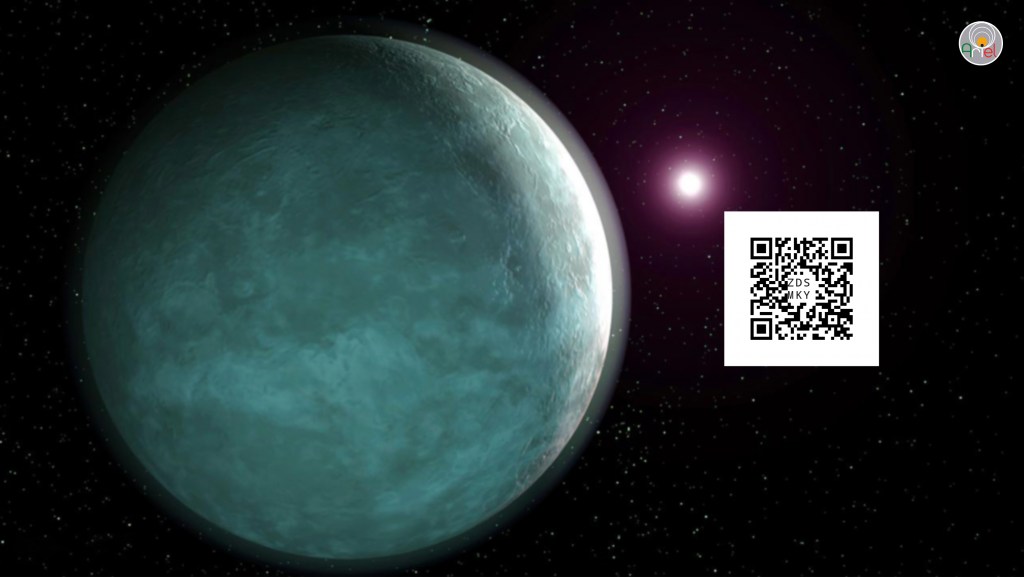
Ariel is a mission of the European Space Agency, whose launch is scheduled in 2029 and devoted to studying the atmospheres of extrasolar planets, namely all those planets orbiting around stars similar or different from the Sun. Thanks to this space mission, for the first time it will be possible to carry on a systematic study of the properties and chemical composition of the atmosphere of these celestial bodies, to shed some light on the still obscure points about their formation and evolution.
Italy is one of the 17 countries taking part in the Ariel Consortium and gives important contributions from the technological point of view – such as constructing a fundamental part of the satellite, i.e. the telescope – and from the point of view of scientific preparation and data exploitation.
But then how will Ariel work?
Let us discover this with activity in augmented reality, realized with Cospaces and Merge Cube, where you can transform your mobile devices – smartphones or tablets – into the Ariel satellite, hunting for exotic atmospheres. This is a digital experiment aimed at understanding the analysis of the atmospheres of planets outside the Solar System. How different will they be from that of the Earth?
Among the planets selected by the research group of the Ariel mission, we can find L98-59B, GJ436 b e HAT-P-32b.
The catalogue of objects which Ariel will observe will be populated by planets which have different properties since the mission will study the features of the atmosphere and composition for each kind of planet and star known: rocky planets (more similar to the Earth), gaseous planets (such as Jupiter) and those with intermediary features (i.e. planets identical to Neptune). These latter planets, with atmospheres as extended as those of giant planets, but with a much lower mass and size, are considered very interesting by the researchers to understand the mechanisms of their formation.
The three planets selected for this interactive experience in augmented reality fall into these three categories and will be useful for three types of planets which Ariel will observe:
L 98-59 b
This planet, which by size is slightly smaller than the Earth, orbits around the star L 98–59, which is much smaller and colder than the Sun, in the constellation of the Flying Fish, and is less than 35 light-years away from the Solar System. It was detected using the TESS Space Telescope through the transit method and, because of its extreme proximity to the star, the surface temperatures are very high.
HAT-P-32 b
It orbits around the star HAT–P–32, which is 950 light years from the Earth. The planet is classified as hot Jupiter, i.e. similar to Jupiter in mass and size (slightly less massive than Jupiter and almost double the size) but decidedly hotter since it orbits very close to its star. This planet too was discovered with the transit method, through ground-based observations.
GJ436 b
The planet, the size of Neptune, orbits around the star Gliese 436, a red dwarf, about 30 light years away from the Earth. Discovered in 2004, together with 55 Cancri e was the first of a new class of extrasolar planets, classified as hot Neptune-like planets since their size is similar to that of Neptune, but are much hotter, since they are very close to their star.
Ariel’s work
As mentioned at the beginning of this text, thanks to augmented reality, the mobile device which we will use will simulate the work which one day the Ariel satellite will be able to do to detect the features of each of the three planets.
Once you’ve scanned the QR code and activated the experience, always point your device’s camera at the Merge Cube that has transformed into the planet you’re watching, just like Ariel’s eye would. Here you will find the instructions for printing your Merge Cube at home or school.
Ariel will observe all the planets while transiting in front of their star, mainly using two instruments, called FGS (Fine Guidance System) and AIRS (Ariel medium-resolution InfraRed Spectrometer).
FGS will detect the decrease in the parent-star light, caused by the passage of the planet in front of its disk obscuring a portion, producing the classical “U” shape of the light curve of planetary transits. [Discover more on the transit method with educational robotics]
AIRS – on the other hand – will process more in detail the data obtained by the observation of the transit, and will produce the spectrum of the planet. During the observation, indeed, the planetary atmosphere filters the light coming from the star imprinting on it the signatures of the molecules which constitute it. In this way, it is possible, through a very complex data analysis, to identify the chemical compounds characterizing the atmosphere of the planet, identifiable at certain determinate wavelengths.
Always hold the camera of your device on the image of the planet, just as Ariel’s eye would do, follow the instructions which will appear in augmented reality and start to analyze in detail the atmosphere of the detected planet, while choosing the instrument for the analysis. You will see data, signals and simulated spectra of the chemical elements which compose it.
Earth-like Planet L 98-59 b
Transit Duration: 1 hour
Planetary radius: 0.85 Earth’s radii
Molecules: hydrogen cyanide
Giant Planet HAT P 32b
Transit duration: 3 hours
Planetary radius: 2 Jupiter’s radii
Molecules: water
Neptunian Planet GJ 436b
Transit duration: 1 hour
Planetary radius: 4.1 The Earth’s radii
Molecules: carbon monoxide, carbon dioxide, water
—-
The one presented in this sheet is the second version of the activity, realized using Cospaces and Merge Cube. The original version was developed with Zapworks, a platform that offered a temporary license that later expired.
“Che aria si respira sugli esopiantati” was designed by Serena Benatti, INAF OAPa researcher and Head of Communication at Ariel Italia, and developed by Laura Leonardi, INAF OAPa, the spectra present in the application graphics were simulated by Claudia Di Maio, INAF OAPa researcher, using the code TauREX3 (developed by A. Al-Refaie and collaborators).
The experience “Selfie with Ariel”, no longer accessible in this tab due to the expiration of the license, was created by Laura Leonardi of INAF OAPa always with Zapworks.
Both augmented reality experiences made with Zapworks were presented at the European Researchers’ Night 2023. The latter version was presented at the 2024 European Researchers’ Night.



